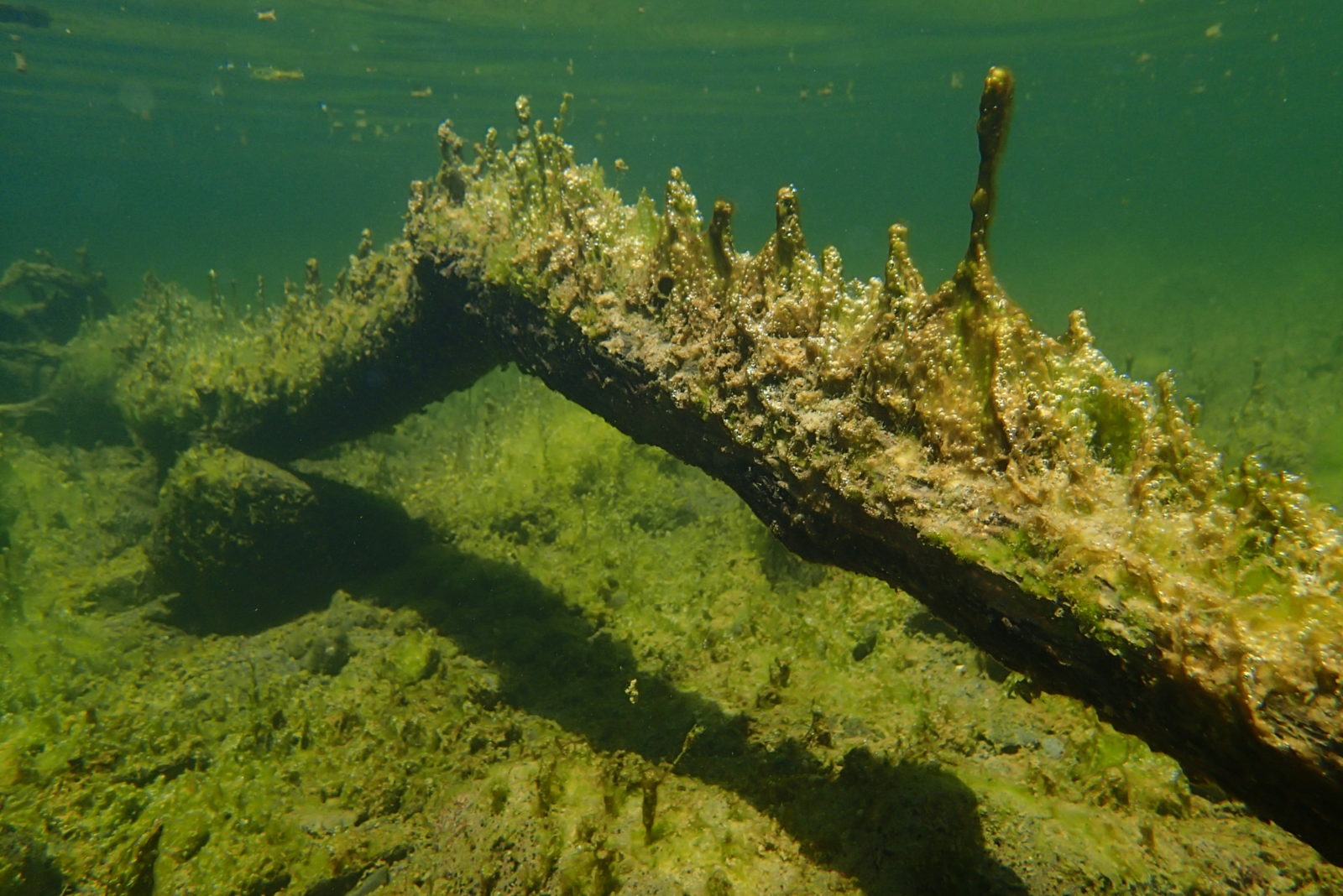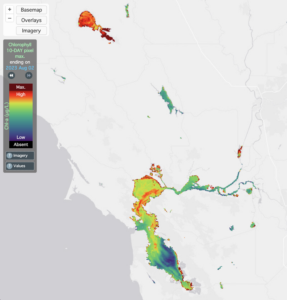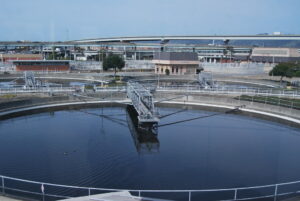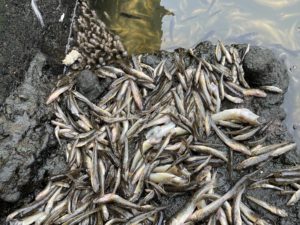Summers in the Bay Area are an invitation to water. Kayaks floating along the shoreline at Big Break, vacationers lounging at Niles Beach, adventurers tubing the Russian River, and fishers hanging lines off the pier at Lake Temescal. As the 1970 Mungo Jerry hit put it “In the summertime, when the weather is fine, We go fishing or go swimming in the sea.”
But all of these recreational spots have had advisories for harmful algal blooms (HABs) or toxic algal mats in July this year. HABs are increasing in incidence, duration, and toxicity statewide and so are their health impacts on humans, domestic animals, and wildlife. Many reservoirs that store drinking water have also been impacted. Harmful algal blooms are most common from late May through October in parts of California, and the warnings range from staying away from algae or scum if swimming to staying out of the water entirely.
Not all blooms are toxic, however, and there is no way to tell whether it is just by looking: We don’t yet fully understand the conditions that lead cyanobacteria to produce toxins. Cyanobacteria, the predominant organisms that proliferate in nuisance algal blooms in freshwater ecosystems like rivers and lakes, are the foundation of freshwater food chains, but become harmful when they take over in high volumes, and when the blooms are dominated by toxin-producing cyanobacteria. “That’s why we call them blooms — because it’s something that is microscopic and in the background, and then something triggers it to grow in density to the extent that they outcompete other organisms and skew the dynamics of the system,” Marisa Van Dyke, Senior Environmental Scientist at California State Water Resources Control Board (Water Board), says.
If you’re worried about recreating near regional water sources, you aren’t alone. The Water Board’s Freshwater and Estuarine Harmful Algal Bloom Program (FHAB) estimates that there were 300 reports of HABs in 2020 and more than 600 in 2021. The data is admittedly limited, as it comes from individuals reporting suspicious blooms as well as from some agencies like the East Bay Regional Parks District, which has a comprehensive water sampling and monitoring program. The State Water Board records these HAB incidents and updates a HAB map to show where algal blooms are, and when they were spotted.
HAB Incident Reports Map + Reporting a Bloom

To help people recreate safely, the map also provides a landmark where the bloom was seen, the advisory level, and when it was last updated. In eastern Contra Costa, for example, multiple locations at Discovery Bay had been issued a Danger advisory as of July 27. This means that people should stay out of the water entirely, not touch scum in the water or on the shore, or eat the fish and shellfish caught here. They should also never let pets go in the water, drink the water, or eat scum on the shore. For a town that essentially sits on water and boasts more than 1,200 miles of waterways, this is bad news indeed.
The growing threat posed by HABs prompted the California Legislature to pass a bill that mandated the creation of the Freshwater and Estuarine Harmful Algal Bloom Program in 2019, which had been running as a smaller, localized program out of Van Dyke’s office at the Surface Water Ambient Monitoring Program (SWAMP) before then. The bill tasked FHAB with tracking blooms, monitoring places at risk, supporting their monitoring, and getting this information out to the public. A sister bill, which would have established regulatory standards or thresholds for the toxins that harmful algal blooms produce, did not pass, however. “If you’re not looking for it, you’re not going to find it,” Van Dyke says. “So while monitoring is expensive, we need it to inform our actions. And one of the ways to monitor the magnitude and trends of this issue is to put thresholds for these toxins into existing water quality standards.”
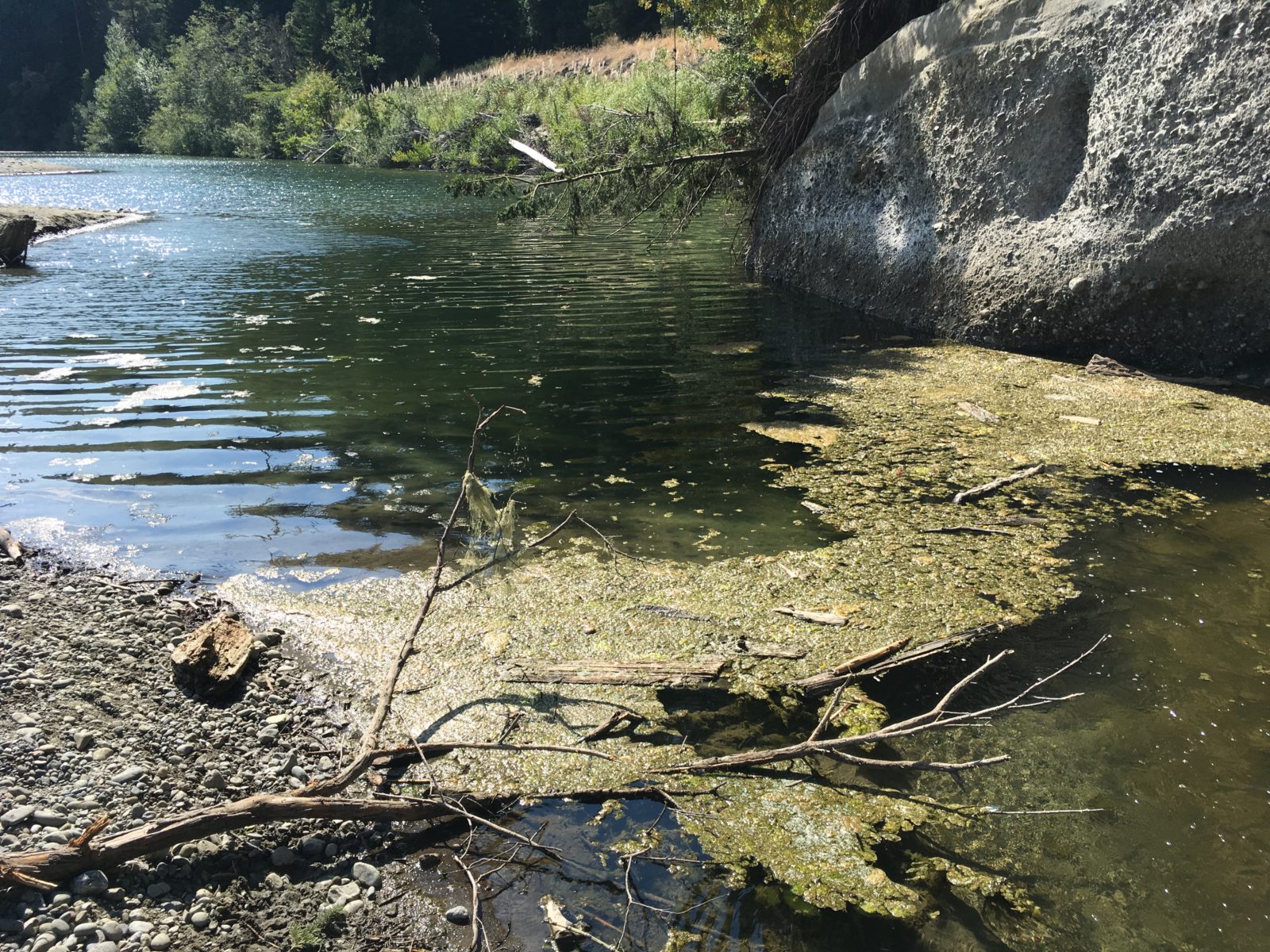
East Bay Regional Parks have a comprehensive monitoring program where they sample their properties for HABs every two weeks, leading to consistent information and emerging trends. This is not the norm though, and at first glance, it may seem like the North Bay is a lot less affected by algal blooms. This consistent monitoring would also help scientists understand environment drivers that are affecting the size as well as toxicity of the blooms.
Since 2014, SWAMP has been working with NOAA scientists to collaborate on using satellite imagery that shows where blooms are occurring. Satellite images can estimate cyanobacteria abundance near the surface of water through special instruments that look for photosynthetic pigments that are present in algae. Over time, data from every new image can be synthesized to get an index of low-, medium-, and high-density growth.
Satellite imagery can also be fed into models that could then forecast algal blooms. “What we need for this is data of California’s unique ecology and climate to inform these models. And so that goes back to the fact that we need a monitoring program to collect regular data on the extent, duration, and trends of algal blooms.” Van Dyke says. “In the future, this will be more economical. Some part of the comprehensive monitoring will be humans going to the water and testing, and some of it will be based on satellite-based forecasting.”
But in the meanwhile, in the absence of threshold levels that mark a water body as safe, and irregular monitoring and reporting of harmful algal blooms, how can people go and enjoy being outdoors doing some of their favorite things?
For starters, stop and look for water discoloration or algal mats at the bottom of the pond or river bed. If it doesn’t look right, move upstream or to the other side of the beach. “There are plenty of waterways that are not impacted by this,” Van Dyke assures. “Like when you go on a trail and assess whether it is rattlesnake territory or if there is poison ivy — just take a look and then enjoy, because we all love being out on the water.”
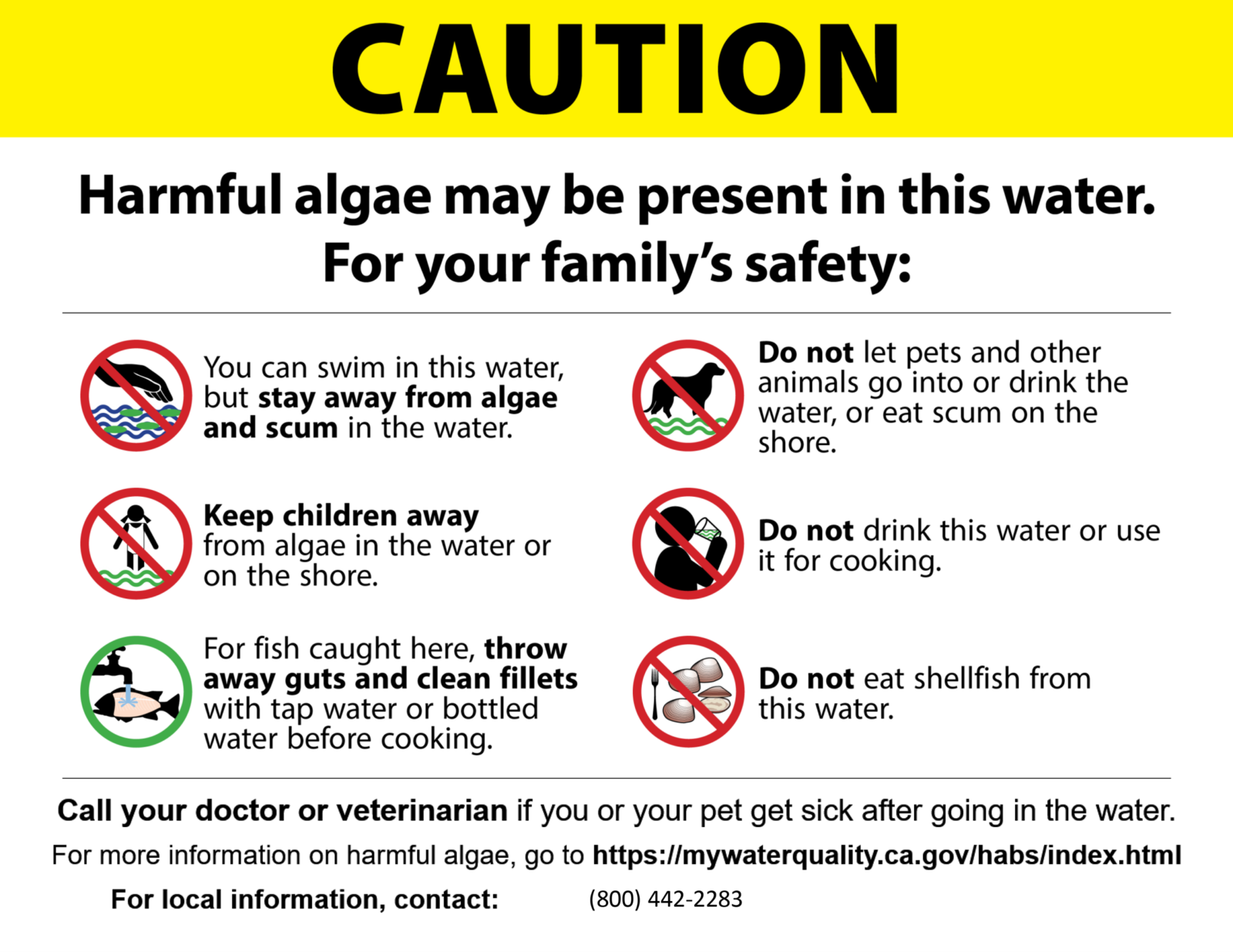
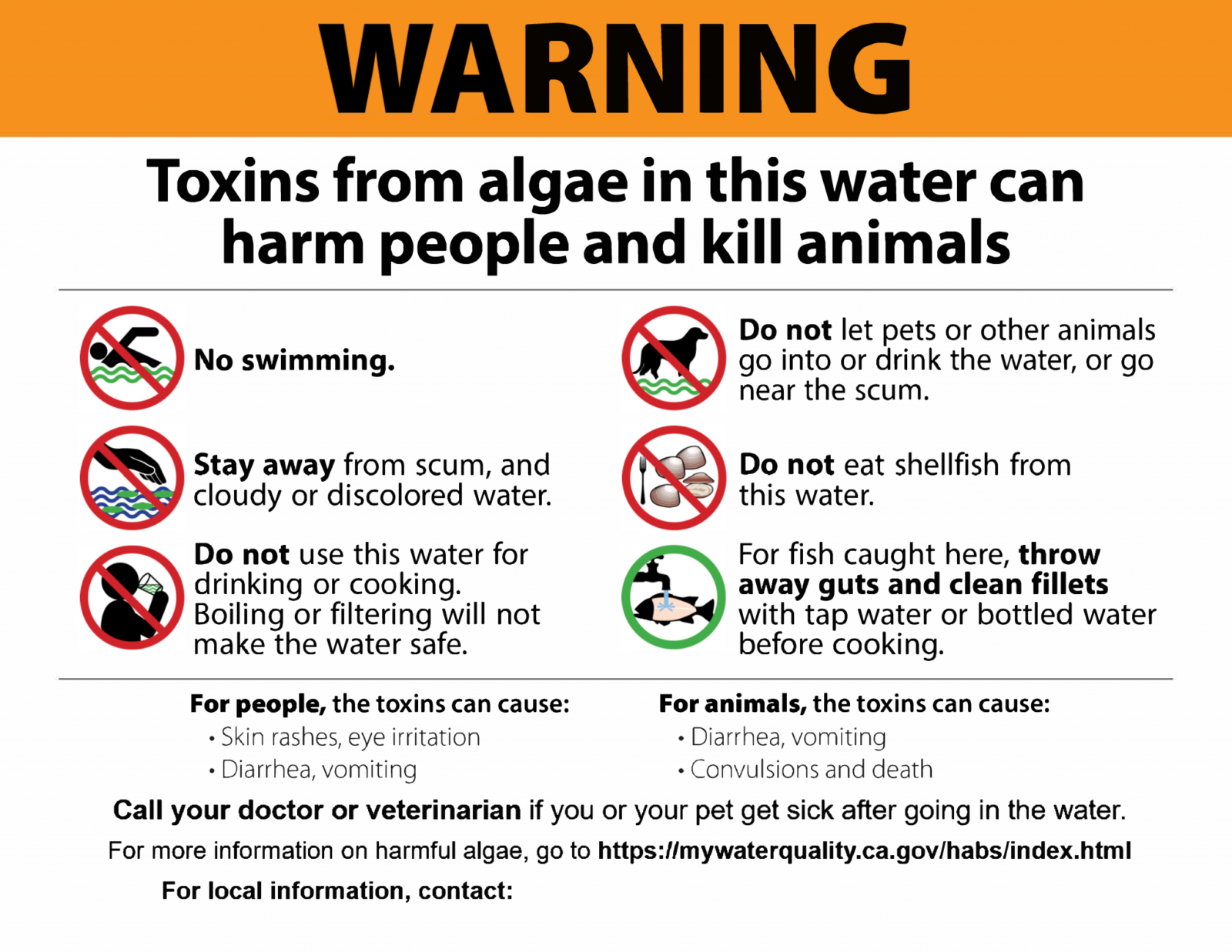

The FHAB Program also has some handy pointers for Healthy Water Habits:
- Avoid algae and scum in the water
- Keep an eye on children and pets (dogs); they are most susceptible for exposure
- Do not drink this water or use it for cooking
- Wash yourself, your family and your pets with CLEAN water after playing in waterbody
- If an advisory is posted, follow all instructions on posted advisory
As for pets:
- Do not let pets and other animals go into or drink the water, or eat scum on the shore
- Bring bottled water with you to give to your dog to drink
- If your animal gets in the water with a bloom, immediately wash them with clean water and do not let them lick their fur.
If your pet displays symptoms such as seizures, vomiting, or diarrhoea after contact with surface water, contact your veterinarian right away.

